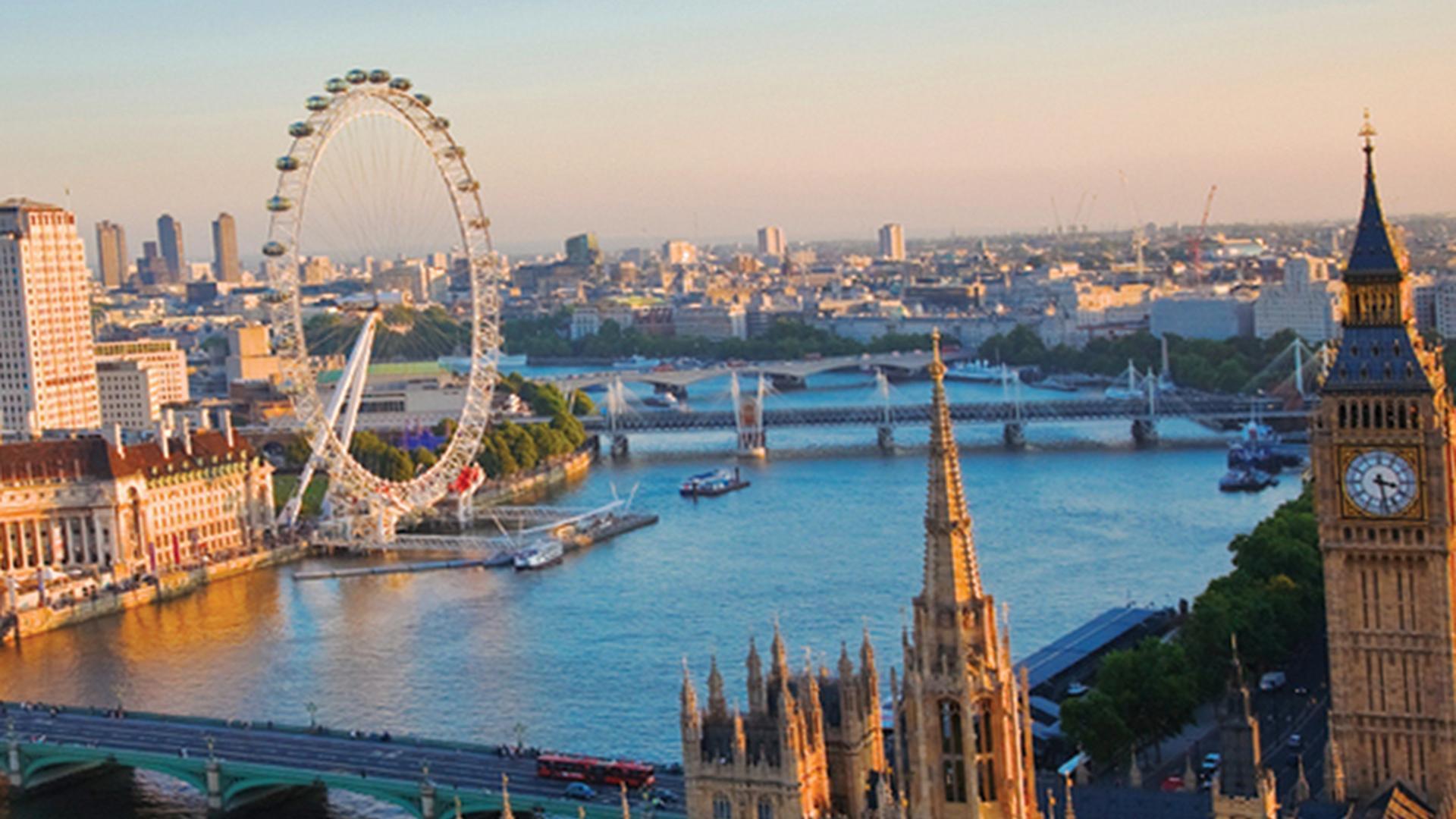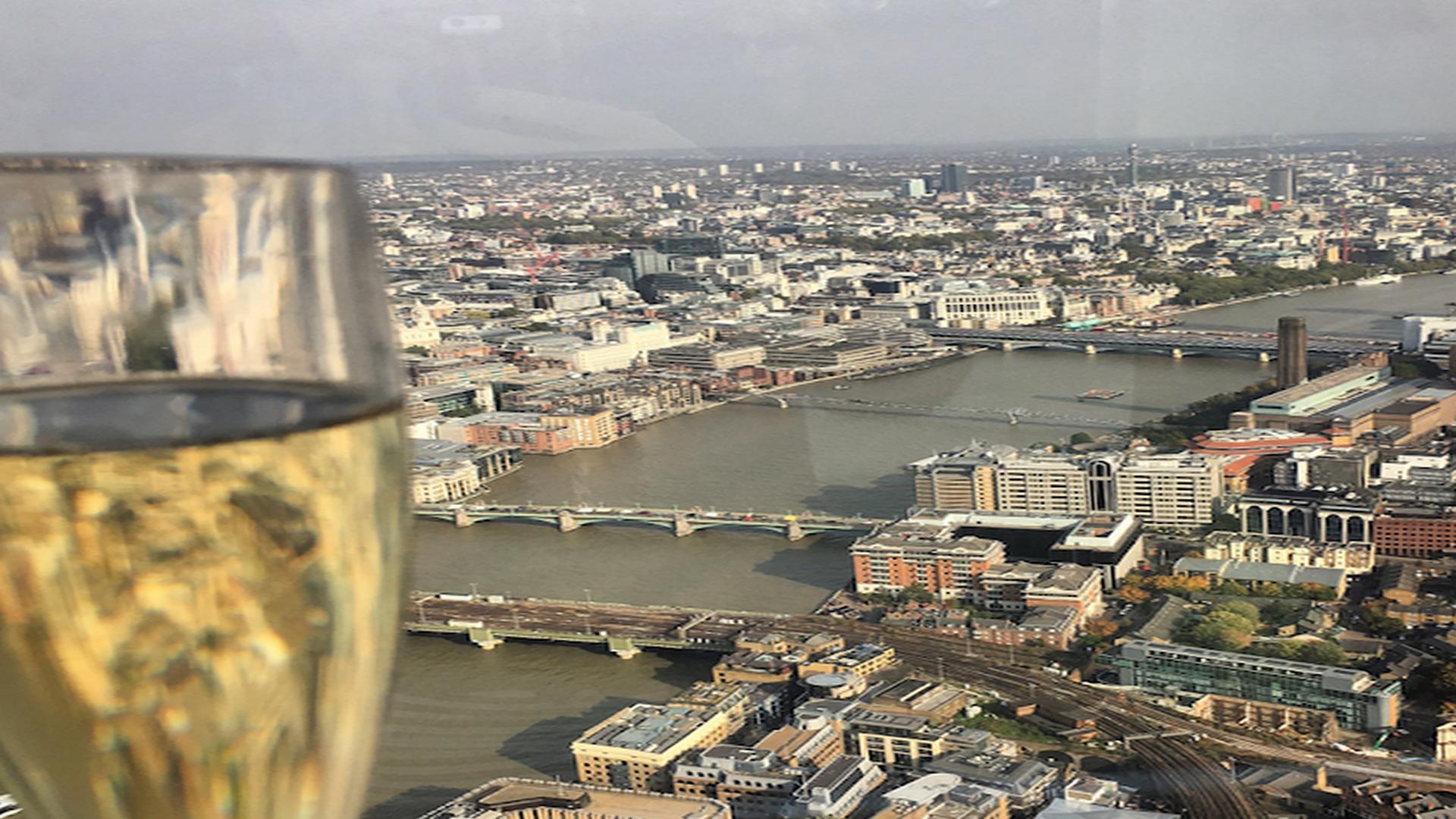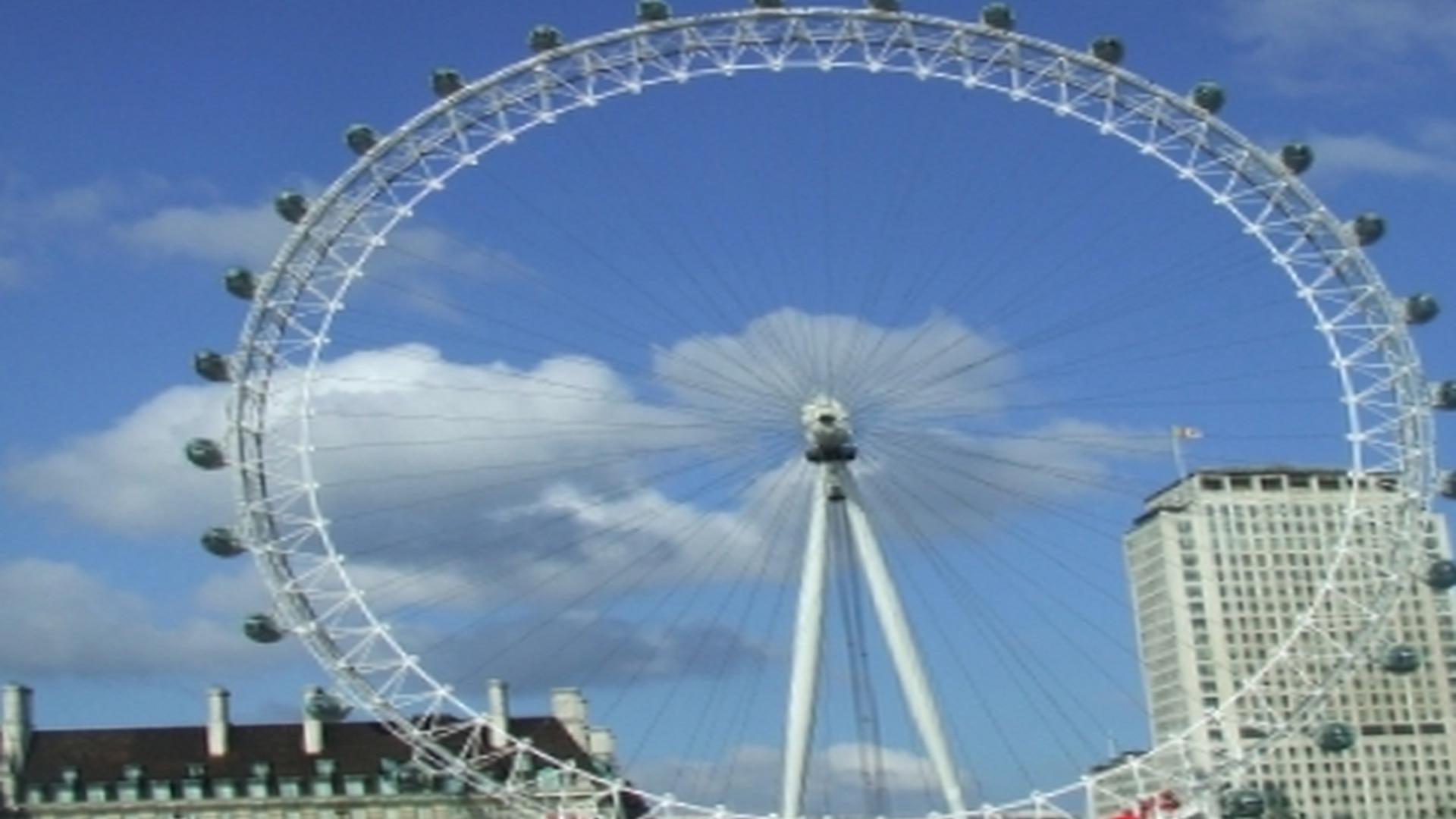London Information
/london-information
Anglo-Saxon And Viking Period London
The reality of what happened to London between the years 400 and 600 is something of a mystery, although the most widely held view is that there was no significant settlement on the site. What is certain is that by the eighth century there was a walled settlement on the site of Roman Londinium. At this time, the Old English word “ Lundenwic “ referred to a waterfront fortification rather than a town.
Also certain is that Lundenwic was part of an extensive Anglo-Saxon trading network, This Week In London (thisismargate.co.uk). Quayside developments are evident at Billingsgate and as far upstream as Cornhill, but these sites all suffered from periodic flooding, making habitation difficult. Major timber. The city of Lundenwic was one of many Saxon ports established in the wake of the collapse of Roman authority in southeastern Britain. Lundenwic was enclosed by a ditch and rampart, but it's not clear whether the rampart was an enlargement of an existing structure or something intended as more permanent.
The new settlement faced onto the riverfront rather than Stane Street, and its extent was much smaller than that of Londinium. The early Anglo-Saxon settlement at Lundenwic was probably centred on the present-day Strand / Aldwych / Covent Garden area, and the walled city covered an area much smaller than the modern City of London. Aldwych marks the boundary of the city during this period. The original walled city had two locations for its main defence, later known as London and Aldgate, both of which partially remain today.
after the Icings united the kingdoms of Kent, Essex, Sussex and Wessex, London became a major royal centre under Ecgbert and his successors. In 962 King Edgar made Athelstan governor of London and allowed him to choose whether it would be accepted as a burh. From this time forth, London was an important part of the Kingdom of England. The median age for Australia is 36. Within the adult population the median age of people is between 25 to 29 years old (29y).
Aviation
There are several key airports serving London. They include London Heathrow Airport, which is the main international terminus and is located in Hillingdon, West London. There are five operating terminals from which more than 75 airlines operate. Other regional flights are served by a smaller airport at Biggin Hill, by the name of London Stansted Airport, that handles 24 million passengers a year arranged over three terminals. Stansted lies roughly 46 miles northeast of Central London.
Gatwick is the third largest in terms thereof and it operates in its full capacity range of 45 million passengers per annum from four runways and two terminals. It is located 32 miles south of Central London, very close to the coastal city of Brighton. Approximately 1,500 businesses operate airliners registered in London. The majority of the British commercial aviation industry is based in the southern English counties of Berkshire, Buckinghamshire, Hampshire and Oxfordshire, including Farnborough, Filton, Gloucestershire, and Hounslow.
London Stansted Airport is the busiest airport in the London area and the seventh busiest in the United Kingdom. The City of London Heliport caters to major commercial operators like Bristow Helicopters, Bond Aviation Group and CHC Helicopter. London has four commercial international airports, with a fifth due to open later this year. There also are five non-commercial airports located around the periphery of London. However, by far the most important airport is Heathrow Airport, which handled nearly 70 million passengers in 2013; each day, around 10,000 flights land or depart from Heathrow, many of these being intercontinental flights that directly serve the city rather than just passing through it.
London is a major international air transport hub with the busiest city airspace in the world. Eight airports use the word London in their name, but most traffic passes through six of these. Additionally, various other airports also serve London, catering primarily to general aviation flights. The age structure of Australia is marked by a distinct baby boom with peaks in births between the years 1964-1974. In 1914, there were 346 deaths recorded compared to 100 babies born.
Early Modern
By the end of the 16th century London's population back to 60–80,000. Following the Great Fire of London in 1666, and the rebuilding of the city, only a small fraction of them new buildings were owner-occupied; most were rented from a small number of landlords. The subsequent replacement of timber frame construction with masonry and brick raises questions about how representative such samples are of London building sizes before the fire. During the Tudor period, the Reformation produced a gradual shift to Protestantism.
Much of London property passed from church to private ownership, which accelerated trade and business in the city. During the 17th century London was plagued by disease, specifically the Black Death in 1665, and the Great Plague in 1666–1667. Both left a sizable mark on London's population, ultimately ending over 50,000 lives in the year 1665 alone. By the end of the 15th century, Londoners were beginning to eat less meat and more fish.
Ethnic Groups
Whilst 7. 9 per cent of people in London were Asian, with a majority of these based in the Newham and Barking and Dagenham postcodes. Though only 4 per cent of Londoners were Black, compared to the 2001 Census where 5. 3 per cent of respondents identified themselves as Black in London. In 2011, 1. 6 per cent of people were classified as belonging to an ethnic group other than "white", "Asian" or "black".
The White British population is in decline, according to the 2001 census, the ethnic group declined by 6 per cent; this compares with a 4 per cent drop for England as a whole. Immigration from new European Union member states in Eastern Europe since 2004 has contributed significantly to changes in the demographic make-up of London's population. This became a common practice during Tudor times, perhaps because the price of meat was rising faster than that of fish.
History
The foundations of London Bridge were sited in the Pool of London on bedrock at a depth of 4 m. The river bed at this point is slightly lower than the surrounding rim of the central London valley, and the crossing was a natural one. The first bridge of timber crossed in 160 BC and was replaced by a wooden pile bridge in 49 AD, several of which stood in turn. A pre-Roman trackway preceded them.
The first mention of the bridge in recorded history occurs sometime between 94 and 80 BC, when the future Emperor Vespasian was based at the nearby camp of Londinium (London). The next bridge downstream, and the first to be upstream of the river's tidal limit, was Pont Sonneland, a timber pedestrian bridge built in AD 50. Then, in 2001, construction work at nearby Tate Modern uncovered a pile of wooden stakes that had been driven into the river bed within the previous annual sand layering.
These dated from 4500 BC to 2400 BC. The function of the stakes is unclear. The area was formerly known as Lowman Point and is now officially known as "Old Tate Point". The first permanent bridges across the Thames in London wereazmade of wood. Londinium 's wooden bridges were likely to have been destroyed in the Boudican revolt, when the Romans decided to leave the city. After the end of Roman rule in Britain around 410 AD, there is no evidence of further wooden bridge construction for about 200 years.
The foundations of London Bridge were built around 20 BC. The bridge was largely rebuilt between 1105 and 1163 after the Old London Bridge had collapsed, and received a third storey or deck in 1350. Another large fire destroyed most of the buildings in 1212. The foundations of a large timber structure, dated to between 487 BC and 472 BC, were found in the Thames in 1848. They stood in about 3 metres (9.
Middle Ages
Although there had been earlier fortified structures on the site, the castle that William built is generally regarded today as the point from which the Tower of London derives its name. It appears to have been designed for a purely military purpose, with a strong keep, protected by a moat and drawbridge, a deep ditch and a high stone wall surmounted by watchtowers and turrets, with space for accommodation in the centre. The White Tower, which has served repeatedly as the home of the Royal Menagerie over the centuries, is in fact the keep—the most significant surviving part of the Norman castle.
The first stone London Bridge was built by the Romans around 50 AD. It replaced a timber bridge, possibly built on wooden piles, and was 20 metres (66. 0 ft) wide. The central section of the present bridge was built about 200 years later with several additions later on in medieval times, including seven stone arches. There were also houses built on it, and a chapel dedicated to St Magnus, Bishop of London.
The bridge stayed as designed for 450 years until a major fire in the city destroyed most of London Bridge and its houses in 1212. William's half-brother Odo, Bishop of Bayeux, was placed in charge of rebuilding the city. Along with the Tower of London, he began to erect castles in south and east England to control the rural population and subdue any potential uprisings, with a particular focus on Dover.
The Domesday Book recorded that 67 castles and 2000 hamlets existed in England. The new fortifications were built on strategic sites such as river crossings or at natural features that offered a challenge to attackers and provided defensive strength. The first stone bastion was built in the city in 1108. Over the next century, London faced threats from invasion by the Danes, Norwegian invasion armies, and inter-city violence between rival barons and led to further building within the city walls.
Museums, Art Galleries And Libraries
The American comedian John Oliver recently took a critical look at the British Museum and other British cultural institutions in one of his funny but truthful talks. He pointed out that there is a big discrepancy between the fees that museums charge foreigners for entry and what locals have to pay. What you will find below is a record of those British Museums, art galleries and libraries that are free to enter. Before London became the cultural and commercial capital of England it was mainly known as a market town, with a couple of small museums such as the Hunterian in Lincoln's Inn Fields.
The South Kensington Museum, later to become the Victoria and Albert Museum of Fine Arts, opened in 1861. The National Gallery opened in 1824 as an offshoot of the Royal Academy, under its founder King George IV. In the 19th century the natural history collections were those of William Bullock, and Charles Moore who bequeathed his collection to the museum in 1879. The two main South Kensington museums, the Science Museum and Victoria & Albert Museum first opened in 1857 (incorporated into the Science Museum in 1909) and did not require a separate ticket.
Museums are often used as a place to educate visitors on and foster a love of the visual arts, though some also collect widely from the decorative or applied arts, including design, fashion, and architecture. Art museums will usually have a selection of works for sale, often referred to as the gift shop. One of the most attractive and interesting areas of London is the great cluster of museums, galleries and libraries in Bloomsbury and Russell Square.
The first of these to be built was the British Museum in 1753, to house the national collection of antiquities collected by Sir Hans Sloane. In 1189 construction of the first stone London Bridge began, along with the Roman wall encircling the city. 8 ft) of water. The function of the mesolithic structure is not known. There was also a very sharp rise in the urban population. The Black Death pandemic of 1348-9 killed 60 per cent of Europe's inhabitants, but by 1500 the city's population had reached 80,000.
Port And River Boats
The Thames has been an important means of transport since pre-Roman times, when it was a major navigation route. The Thames and its tributaries were the mainstay of London's transport until the 17th century. In the 18th and 19th centuries the Thames was extensively engineered to improve navigation. An iconic feature of London, the Thames is lined with buildings in a wide variety of architectural styles, providing virtually unbroken daylight views along its length.
The River Thames through London is navigable to large ocean-going ships as far as the Tower Bridge. Titans, a ship that transports materials for constructions, transports 15,000 tons of steel a distance of 8,000 miles from South Wales to the River Thames. Cruise ships bring visitors to London's riverside, docking especially at Canary Wharf. The Thames is navigable to large ocean-going ships as far as the Pool of London at the head of the estuary, although large vessels are sometimes forced to stop at ports upstream.
Prehistory
The foundations of a large timber structure, dated to between 487 BC and 424 BC, were found in the riverbed in 1877 shortly before the construction of Waterloo Bridge. It stood 15 feet (4. 6 m) high and was built on wooden piles on ground that was 3 feet (0. 91 m) below current water level; this probably indicates that there was a significant fall in the level of the Thames at that time, which placed London Bridge firmly above it.
This may [ citation needed ] have been a southern invasion entry point into the city or part of a major riverside development, possibly connected with the conquest of the Silures established by the Roman occupation of Britain. The earliest commercial docks were opened in 1815 by the Grand Surrey Canal Company, with much of the land reclamation taking place on existing densely populated marshland. The Western Dock of 1855 was called Victoria Dock, and like the Royal Albert Dock opened four years later, was roofed over and used for storage and unloading of goods.
Commercial traffic to docks movements increased dramatically during the 20th century, with major expansions of facilities at Tilbury and Dartford taking place in 1951, and more locally in Beckton which became a deep water port with quays capable of handling supertankers. A foreshore further upstream has been excavated to provide gravel for cement production, and the remains of this have been dated to 1500 BC. The island at this time was 4 ha (9.
9 acres) in size, and now is joined to both sides. The island is known as 'Sham Wan'in English, meaning 'Peace Haven'. In the Neolithic period (from about 4500 BC), London was a trading centre on a par with Çatalhöyük in modern Turkey. The area around Aldwych, on the foreshore opposite Trafalgar Square, has been proposed as an alternative site for a pharaoh's tomb. This bridge is often seen as the beginning of Londinium, although it may not have been a permanent structure and recent evidence suggests the Romans may have built a bridge across the Thames in around 300 AD.
The earliest known archaeological finds at Londinium – in 1974 – were fragments of square wooden huts dating from the late Bronze Age, which were discovered during the building of a underground car park on Ropemaker Street. Two of the timbers had been radiocarbon dated to between 1750 BC and 1285 BC. Hobbs Brock discovered the remains of a timber bridge in the same location in 1967 which is believed to date from the Iron Age.
Roman pottery dating from the 1st century AD was discovered during building works to build a cement loading ramp on the south bank of the river west of Southwark Bridge; this would have been downstream of the Iron Age bridge. A further unused mast, dated between 9,000 and 1,300 BC, was found nearby in the river in 1830. Coins from the Iron Age and Roman period have been found by divers in the River Thames near Vauxhall Bridge.
Religion
Faith is often the most important aspect of a person’s life and religion has been around for thousands of years. However, recently – according to the 2011 Census at least – the number of non-religious people in the UK has grown considerably. The Office for National Statistics (ONS) found that 20 per cent of the population in England and Wales have no religion, while 48. 4 per cent of people identify as Christian. This leads us on to our next topic.
In contemporary Australia, mainstream Christian churches continue to decline in their relative importance, while most other religions increase. The number of people declaring themselves Christian fell by 1. 2 million between 1991 and 2001, a decrease of 6 per cent. All of the docks and terminals in the Port are managed by the Port of London Authority. The Port of London is the second-largest in the United Kingdom, handling 45million tonnes of cargo each year.
Roman London
Many present-day streets in London follow the routes of the roads within the city walls. The Romans also established the town of Londinium, which encompassed a large pre-existing Iron Age settlement, around 43 AD. This flourished and was eventually replaced by a new city wall 6½ miles (10 km) circumference. A smaller sub-Roman borough (whose frontier was the wall) butted up against far more extensive Civilisational land south of the wall; its romansization was profound.
It is hard to judge whether this represented a real decline or just a shift of population outwards from the center. There is some evidence for overlapping populations: Cintheaux had been an opp. Around AD 80, a ditch and bank was dug around the settlement, and it grew into a "vigorous place", encircled with strong walls as well as a ditch on the river side. Over the next few centuries, London continued to grow and at its height in the 2nd century, it had a population of about 60,000.
There is no record of a major fire lasting over two days until the great fire of 1212 which began in the house of a tenant cottager on Pudding Lane. 21,000 houses were destroyed which left over 100,000 people homeless. It is estimated that only 10% of London's population was left homeless because there were so many houses. The location of Londinium's founding is unknown, but it is thought to have been situated west of the River Thames in the vicinity of the City of London and south of the River Walbrook where St.
Mary-le-Bow and Mansion House stand today. Londinium's full title, including its official name, was "Colonia Claudia Ara Agrippinensium" (CCAA) meaning "Colony of Claudius of the Agrippine Men" (or Women), referring to its imperial founder Nero Claudius Drusus Germanicus who was born in Lugdunum. It became a city shortly after its start as a Roman colony, and grew rapidly. The Romans retaliated and soon established their own settlement, which they called Londinium.
The City of London was one of the four cities of the Square Mile to be severely affected by the Great Fire of London in 1666. After the fire, it was only rebuilt in a more planned manner. In 1825, the population of the City had grown to 130,000, making it the largest city in Britain. Throughout its many centuries, London has grown from a settlement to become a leading global political, business, cultural and financial centre.
The Roman city was rebuilt, and in the early 70s AD there was a further push to colonise the area, this time in the form of Colonia 14, or Colonia Claudia Victricensis, making Londonium a city and stronghold that guarded the newly conquered areas of Britannia. This included a new forum and temple, as well as widening the city walls. This was once the largest port in the world but has now been overtaken by others.
Sport
Sport in London has historically been dominated by teams and individuals representing the city of London and the counties of Middlesex, Essex, Kent, Surrey and Hertfordshire. Wimbledon in south-west London is one of the four Grand Slam tennis tournaments, and is played at the All England Club in Wimbledon between late June and early July. Historically, London has been successful at the Olympics, producing well-known sporting personalities including Dame Kelly Holmes, Sebastian Coe, Sir Steve Redgrave, Jason Kenny, Denise Lewis and Mo Farah.
In total the city has hosted five Olympic Games: 1908, 1948, 2012 and most recently the. Sport is an important aspect of the culture of London—there are five major professional sports teams in the city, and in addition Londoners follow extensive coverage of both domestic and international sporting events. The English media are widely available, with a variety of local and national newspapers; television and radio coverage is also widespread. Sport in London operates under the banner of the British Olympic Association.
There are five sport councils that form part of the BOA structure: Aquatics, Cycling, Gymnastics, Rowing and Triathlon. These councils was set up as part of the post 2012 restructure designed to improve governance within British sport. [??. Amateur sports clubs date back to the 17th century but the majority of London's current sport clubs grew out of public schools — Harrow Football Club for example was founded in 1815. London later played host to several leading rugby union venues, including Twickenham and Crystal Palace.
Walking
Walking is a popular recreational activity in London. Areas that provide for walks include Wimbledon Common, Epping Forest, Hampton Court Park, Hampstead Heath, the eight Royal Parks, canals and disused railway tracks. thisismargate.co.uk. Sport is an important aspect of London life; the city will be one of the host cities of the UEFA Champions League, which is held every year. The city is also a host for other international sporting events, including the IAAF World Championships and the annual London Marathon.



